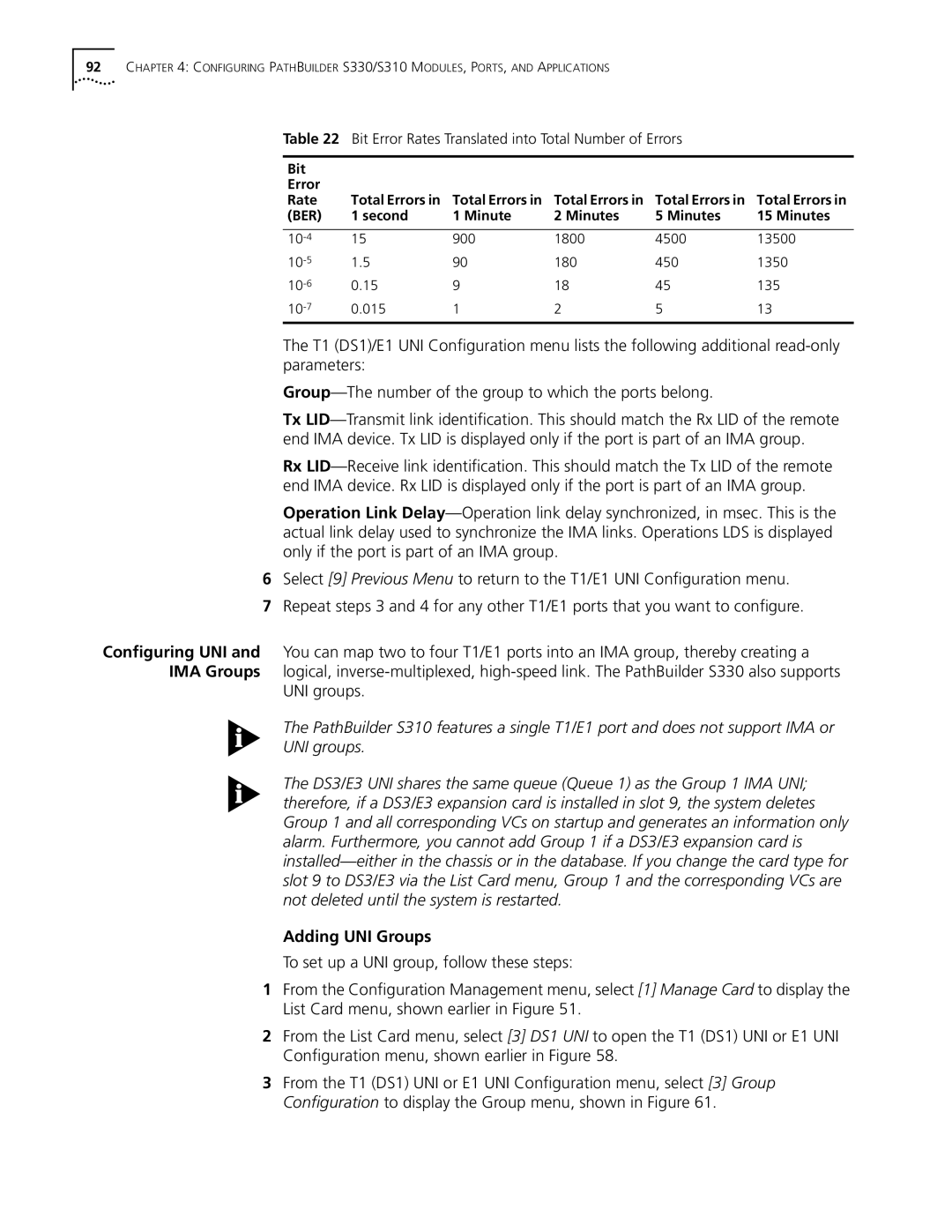
92CHAPTER 4: CONFIGURING PATHBUILDER S330/S310 MODULES, PORTS, AND APPLICATIONS
Table 22 Bit Error Rates Translated into Total Number of Errors
Bit |
|
|
|
|
|
Error |
|
|
|
|
|
Rate | Total Errors in | Total Errors in | Total Errors in | Total Errors in | Total Errors in |
(BER) | 1 second | 1 Minute | 2 Minutes | 5 Minutes | 15 Minutes |
|
|
|
|
|
|
15 | 900 | 1800 | 4500 | 13500 | |
1.5 | 90 | 180 | 450 | 1350 | |
0.15 | 9 | 18 | 45 | 135 | |
0.015 | 1 | 2 | 5 | 13 |
The T1 (DS1)/E1 UNI Configuration menu lists the following additional
Tx
Rx
Operation Link
6Select [9] Previous Menu to return to the T1/E1 UNI Configuration menu.
7Repeat steps 3 and 4 for any other T1/E1 ports that you want to configure.
Configuring UNI and You can map two to four T1/E1 ports into an IMA group, thereby creating a IMA Groups logical,
UNI groups.
The PathBuilder S310 features a single T1/E1 port and does not support IMA or
UNI groups.
The DS3/E3 UNI shares the same queue (Queue 1) as the Group 1 IMA UNI; therefore, if a DS3/E3 expansion card is installed in slot 9, the system deletes Group 1 and all corresponding VCs on startup and generates an information only alarm. Furthermore, you cannot add Group 1 if a DS3/E3 expansion card is
Adding UNI Groups
To set up a UNI group, follow these steps:
1From the Configuration Management menu, select [1] Manage Card to display the List Card menu, shown earlier in Figure 51.
2From the List Card menu, select [3] DS1 UNI to open the T1 (DS1) UNI or E1 UNI Configuration menu, shown earlier in Figure 58.
3From the T1 (DS1) UNI or E1 UNI Configuration menu, select [3] Group Configuration to display the Group menu, shown in Figure 61.
